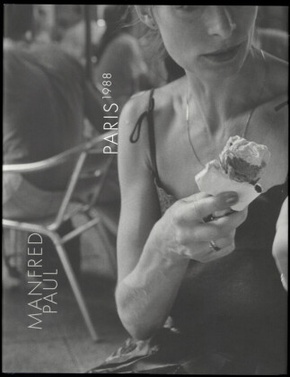Manfred Paul: Paris 1988
| Verlag | Spector Books |
| Auflage | 2023 |
| Seiten | 158 |
| Format | 3,0 x 0,5 x 30,0 cm |
| Gewicht | 1135 g |
| ISBN-10 | 3959057725 |
| ISBN-13 | 9783959057721 |
| Bestell-Nr | 95905772A |
1988 erhielt Manfred Paul die Einladung zu einer sechswöchigen Studienreise nach Paris. Für einen Fotografen aus der DDR damals eine seltene Gelegenheit, ein Land jenseits des eisernen Vorhangs zu erkunden. Von einem Mitarbeiter des französischen Kulturzentrums in Berlin konnte er sich eine Leica M3 ausleihen; durch den optischen Sucher dieser Kamera erlebte er Paris auf eine besondere Weise, was sein Sehen und sein Fotografieren nachhaltig veränderte.Die 65 Bilder in Paris 1988 kümmern sich nicht um das Paris der Touristen, sie sind auch keine sozial-dokumentarische Erkundung, sondern eine Einübung im postmodernen Sehen: gegen die Totale setzt Paul das Fragment, statt dem entscheidenden Augenblick aufzulauern, interessiert ihn die Peripherie der Ereignisse. Oberflächen, Schaufenster, die alltäglichem Zeichen und Ma-terialitäten des Urbanen - Eindrücke die sich nicht mehr zu einem Gesamtbild zusammensetzen, in denen sich aber auch die Atmosphäre jener Zeit vermittelt: L'air de Par is.Manfred Paul, der seit 1968 in Ost-Berlin lebt und arbeitet, zählt zu den wichtigen Vertretern der Autorenfotografie in der DDR.
In 1988 Manfred Paul was invited to go on a six-week trip to study in Paris. At the time, this was a rare opportunity for a photographer from East Germany to explore a country on the other side of the Iron Curtain. He managed to borrow a Leica M3 from one of the staff at the French Cultural Centre in Berlin; looking through the viewfinder of this camera gave him a special experience of Paris, which changed his way of seeing and had a lasting effect on his photography.The sixty-five pictures comprising Paris 1988 are not concerned with the tourist version of Paris, nor are they a social documentary exploration: rather, they are a rehearsal for a postmodernist visual practice. Paul sets up an opposition between the fragment and the long shot; instead of watching out for the decisive moment, he is interested in the peripheral aspects of an event. Sur-faces, shop windows, the everyday tokens and material qualities of city life-impressions that no longer piece themselves together into a complete image, but which convey the atmosphere of the time: L'air de Paris.Manfred Paul has lived and worked in East Berlin since 1968. He was one of the most important exponents of auteur photography in the GDR.

